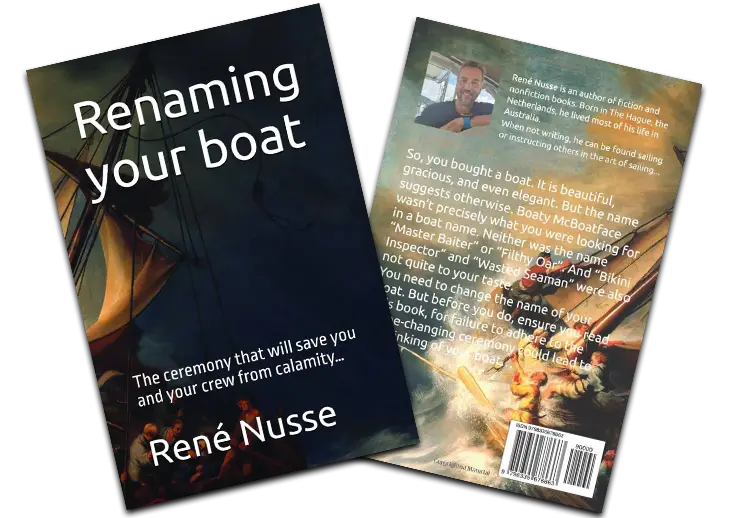Sail trim - some handy tips
Sail trim is crucial for optimizing performance and handling while sailing. Properly trimmed sails can make a significant difference in speed, efficiency, and control. Here are some tips on sail trim to help you get the best performance from your yacht:
1. Understand the Basics
- Main Sail: The main sail is the large sail attached to the mast. It’s crucial for driving the boat forward and requires careful adjustment.
- Jib (or Genoa): The jib is the sail in front of the main sail. It helps balance the boat and can affect the overall trim.
2. Adjust for Wind Conditions
- Light Winds: In light winds, keep sails fuller (more curve) to catch as much wind as possible. Use the outhaul and halyard to create a deeper shape in the main sail.
- Strong Winds: In stronger winds, flatten the sails to reduce power and prevent excessive heeling. Adjust the outhaul, reef the main sail if necessary, and trim the sails for a flatter shape.
3. Use the Tell-Tales
- Tell-Tales: These are small pieces of yarn or fabric attached to the sails. They help you see how the airflow is behaving around the sails.
- On the Jib: Trim the jib so that the tell-tales on the leeward side are streaming straight back. If they are fluttering, the sail is too flat or over-trimmed.
- On the Main: Adjust the main sail so that the tell-tales on the leeward side are streaming straight back. If the windward tell-tales are flying up, the sail might be too full or over-trimmed.
4. Balance the Sail Plan
- Main and Jib: Balance the trim of the main and jib to achieve a well-balanced sail plan. Too much power in the main can overpower the jib and vice versa.
- Use the Traveler: Adjust the traveler to control the angle of the main sail. Moving it to windward increases power, while moving it to leeward reduces power and helps in balancing the boat.
5. Fine-Tune the Trim
- Outhaul: Adjust the outhaul to control the depth of the main sail. More tension flattens the sail, while less tension increases its depth.
- Cunningham: Use the Cunningham to adjust the draft position in the main sail. Pulling it down moves the draft forward, and easing it moves the draft backward.
- Vang: The vang controls the twist in the main sail. Adjust it to ensure proper sail shape, particularly in varying wind conditions.
6. Watch for Sail Shape
- Sail Shape: Look for a smooth, even shape in both sails. Wrinkles or excessive bulges indicate improper trim.
- Draft: Ensure the draft (the deepest part of the sail’s shape) is in the right position. It should be about 40-50% back from the luff in moderate winds.
7. Pay Attention to Heel
- Heel Angle: Watch the boat’s heel angle. If the boat heels excessively, it may be a sign of too much sail or incorrect trim. Adjust the sails to balance the boat.
8. Use the Right Trim for Different Points of Sail
- Close-Hauled: Trim the sails in tight to maximize power. The main should be trimmed in until the sail just starts to luff, and the jib should be trimmed to the point where the tell-tales are flowing straight back.
- Beam Reach: Ease the sails out a bit to let them catch the wind from the side. The main should be slightly eased and the jib should be trimmed just enough to keep it full.
- Running: On a downwind course, ease the sails significantly to catch the most wind. Use a symmetrical or asymmetrical spinnaker if you have one for better performance.
9. Regular Adjustment
- Constant Adjustment: Sail trim is not a set-it-and-forget-it process. Regularly adjust sails as wind conditions change, or as you change course.
10. Practice and Experiment
- Hands-On Experience: The best way to learn sail trim is through practice. Experiment with different settings and observe the effects on performance.
- Feedback: Pay attention to how changes in trim affect speed, balance, and handling. Use this feedback to refine your technique.
By following these tips and continuously practicing, you’ll develop a keen sense for sail trim and improve your sailing performance significantly.
Renaming your boat
The ceremony that will save you and your crew from calamity…
So, you bought a boat. It is beautiful, gracious, and even elegant. Unfortunately, its name suggests otherwise.
Boaty McBoatface wasn’t precisely what you were looking for in a boat name. Neither was the name “Master Baiter” or “Filthy Oar”. And “Bikini Inspector” and “Wasted Seaman” were also not quite to your taste.
You need to change the name of your boat.
But before you do, ensure you read this book, for failure to adhere to the name-changing ceremony could lead to the sinking of your boat…
Author
-

Rene is a keelboat instructor and sailing coach in the Mandurah area WA. He is also the author of several books about sailing including "The Book of Maritime Idioms" and "Renaming your boat".
View all posts



